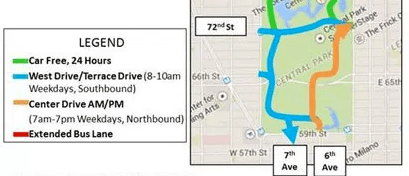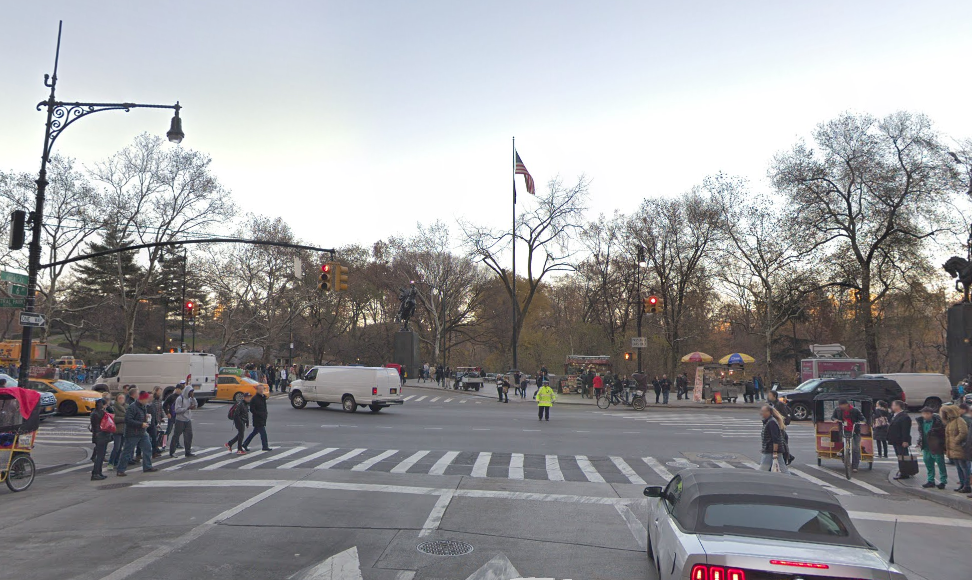Last week's big news about Central Park going car-free in June has implications that extend beyond the park. With the park's roads no longer available as shortcuts for drivers, Manhattan traffic patterns will change, and that will make it easier to claim street space for other uses.
Without a car route to the Upper East Side through Central Park, Sixth Avenue is set to become a road-to-nowhere for some motorists. Meanwhile, for people on bikes, the connection to the Upper East Side through the park will become less stressful and more attractive. Already, nearly 2,000 people bike across 50th Street on Sixth Avenue daily during the warmer months, according to DOT.
Extending the Sixth Avenue protected bike lane north from 33rd Street to the park is, as Jon Orcutt of TransitCenter noted on Twitter, a "no-brainer."
Closing off traffic flow here should reduce 🚘 volume on upper 6th Ave. Extending protected 🚲 lane north from 34th St = no brainer pic.twitter.com/MFULHoUrc8
— Jon Orcutt (@jonorcutt) April 20, 2018
DOT installed a protected bike lane on 25 blocks of Sixth Avenue in 2016, but it ends at 33rd Street. When that project was announced, DOT Commissioner Polly Trottenberg said extending it north was on the agency's radar, but that DOT had to take things "one step at a time."
Since then, DOT has also installed protected bike lanes on segments of Fifth Avenue and Seventh Avenue. But those north-south routes don't extend through the heart of Midtown.
The only protected bike lane east of Eighth Avenue and west of Second Avenue is the southbound route on Broadway. A Sixth Avenue connection would finally provide a northbound route through the busiest section of Midtown.

For similar reasons, now that Terrace Drive and West Drive will no longer be a rush hour shortcut for car traffic through the park, a protected two-way bike lane on 72nd Street will also become an easier lift. Advocates campaigned for a 72nd Street protected bike lane on the East Side a few years ago, but DOT ruled it out.






